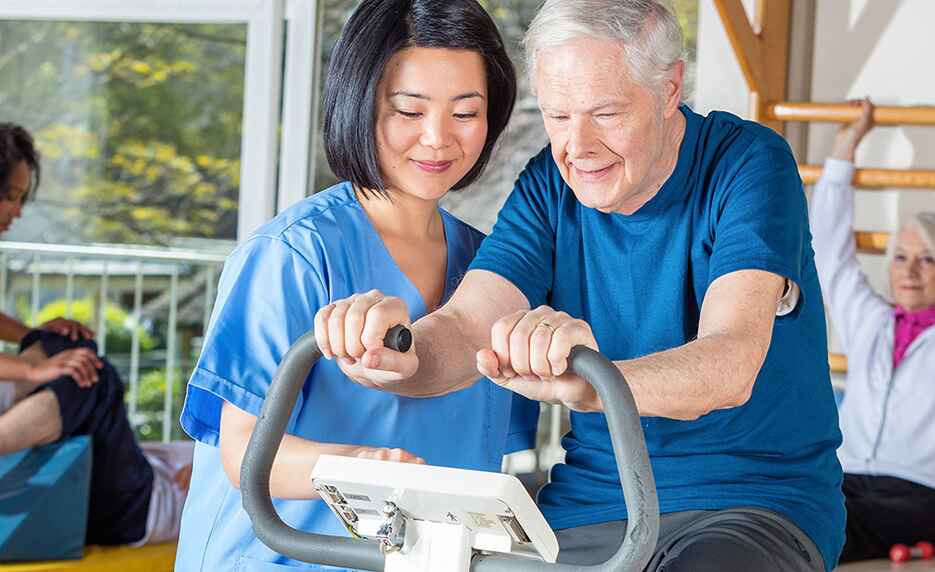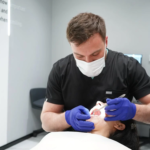Knee replacement surgery is a life-changing procedure for those struggling with chronic knee pain and limited mobility. However, a smooth recovery requires more than just rest—it demands proper care, attention, and discipline. Many patients unknowingly make mistakes that can delay healing or even lead to complications. In this article, we’ll explore the top 5 mistakes after knee replacement and how to avoid them.
Mistake #1: Overdoing Physical Activity Too Soon

One of the most common mistakes patients make after knee replacement is overexerting themselves during recovery.
Why It’s a Problem:
- Too much exercise or walking can strain the knee, leading to swelling and inflammation.
- It can also increase the risk of damaging the prosthetic joint.
Signs of Overexertion:
- Increased swelling after knee replacement.
- Persistent or sharp pain in the knee or surrounding areas.
- Fatigue that lasts longer than usual.
How to Avoid It:
- Follow your physical therapist’s guidelines for exercise.
- Gradually increase your activity level and avoid high-impact movements.
- Use walking aids as needed to prevent excessive stress on your knee.
Mistake #2: Ignoring Persistent Swelling or Pain

While some swelling and discomfort are normal, ignoring persistent symptoms can lead to complications.
Why It’s a Problem:
- Swelling or pain that doesn’t subside could indicate issues like infection, blood clots, or joint misalignment.
- Leg swelling after knee surgery or redness could also be warning signs of deeper problems.
Red Flags to Watch For:
- Severe swelling that doesn’t improve with rest or icing.
- Redness after knee replacement or heat around the joint.
- Calf pain after knee replacement, which could indicate a blood clot.
How to Avoid It:
- Regularly monitor your knee and surrounding areas for unusual changes.
- Consult your doctor immediately if swelling persists or worsens.
- Use ice packs and keep your leg elevated to reduce swelling.
Mistake #3: Skipping Physical Therapy

Physical therapy is an essential part of recovery, yet some patients skip sessions or fail to follow their prescribed exercises.
Why It’s a Problem:
- Neglecting physical therapy can lead to stiffness and reduced range of motion.
- It may also delay your ability to regain strength and mobility.
How to Avoid It:
- Attend all scheduled therapy sessions and follow through with home exercises.
- Incorporate gentle stretches and movements to maintain flexibility.
- Work with your therapist to set achievable milestones and track progress.
Mistake #4: Poor Posture and Improper Movements

Many patients inadvertently place unnecessary stress on their new knee by practicing poor posture or making improper movements.
Why It’s a Problem:
- Improper posture can lead to strain on the knee joint, slowing down recovery.
- Activities like bending, twisting, or carrying heavy objects may damage the joint.
How to Avoid It:
- Practice proper body mechanics when standing, walking, or sitting.
- Avoid bending your knee beyond its range of motion as advised by your doctor.
- Use supportive shoes to maintain balance and reduce impact on the knee.
Mistake #5: Not Resting Enough

Some patients try to return to their daily routine too quickly, underestimating the need for rest.
Why It’s a Problem:
- Insufficient rest can slow healing and increase inflammation.
- It may also lead to fatigue after knee replacement, which is a common concern.
How to Avoid It:
- Schedule regular rest periods throughout the day, especially after physical activity.
- Elevate your leg and use pillows for support when lying down.
- Listen to your body—if you’re feeling tired or sore, take a break.
Additional Tips for a Smooth Recovery
1. Monitor Your Diet
- Avoid foods that cause inflammation, like processed snacks and sugary drinks.
- Include nutrient-rich foods to support healing, such as lean protein, leafy greens, and omega-3 fatty acids.
2. Avoid Falling
- Falling can damage your knee replacement, so take precautions like using handrails and keeping walkways clear of obstacles.
3. Hydrate and Manage Swelling
- Drink plenty of water to support overall recovery and reduce swelling.
- Use ice therapy but avoid over-icing, as it can cause skin damage.
FAQs About Knee Replacement Recovery
1. What Are Red Flags After Knee Replacement?
Severe swelling, redness, heat around the knee, or sharp pain could indicate complications like infection or blood clots.
2. How Long Does Swelling Last After Knee Replacement?
Swelling is common for 4–6 weeks but should gradually improve. Persistent swelling beyond 3 months should be evaluated.
3. When Can I Resume Normal Activities?
Most patients can resume light activities within 6–8 weeks, but always follow your doctor’s guidance.
4. Can Too Much Walking Damage a Knee Replacement?
Yes, excessive walking or high-impact activities can strain the joint and delay healing.
5. Why Am I So Tired After Knee Replacement Surgery?
Post-surgery fatigue is normal due to the body’s energy being focused on healing. Ensure adequate rest and proper nutrition.
Conclusion
Recovering from knee replacement surgery requires patience, discipline, and following your healthcare provider’s advice. By avoiding the top 5 mistakes after knee replacement, such as overexertion, neglecting therapy, or ignoring symptoms, you can ensure a smoother and more successful recovery.
Take it slow, prioritize rest and physical therapy, and always communicate with your medical team about any concerns. Your new knee is an investment in your future mobility—treat it with the care it deserves!
Disclaimer: The content on Wellness Derive is for informational purposes only and not a substitute for professional medical advice, diagnosis, or treatment. Always consult a healthcare provider for medical concerns.



